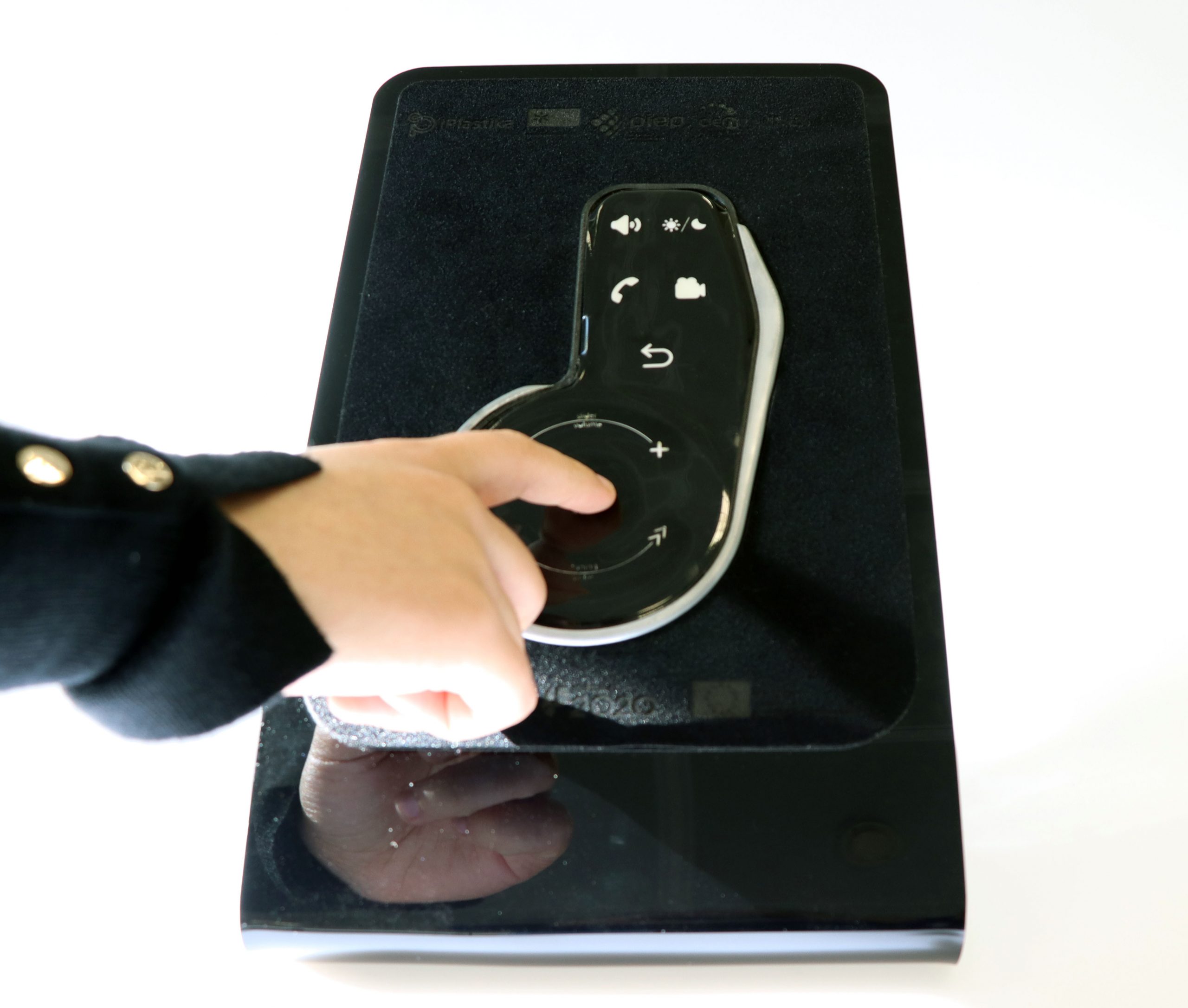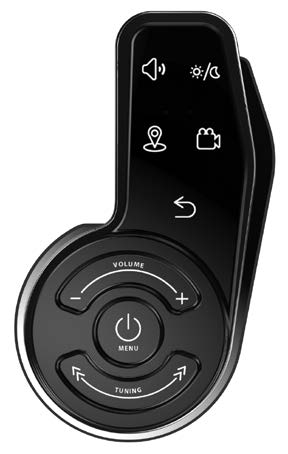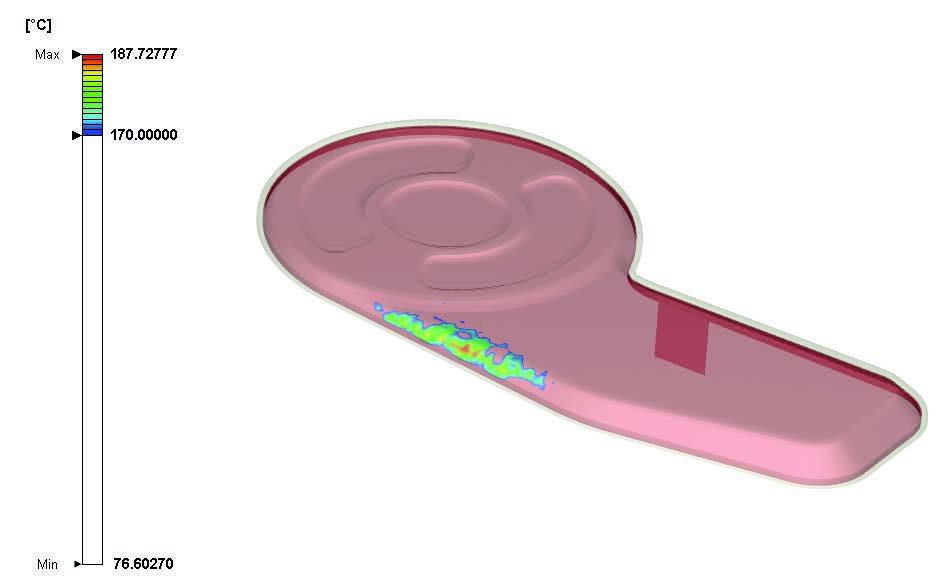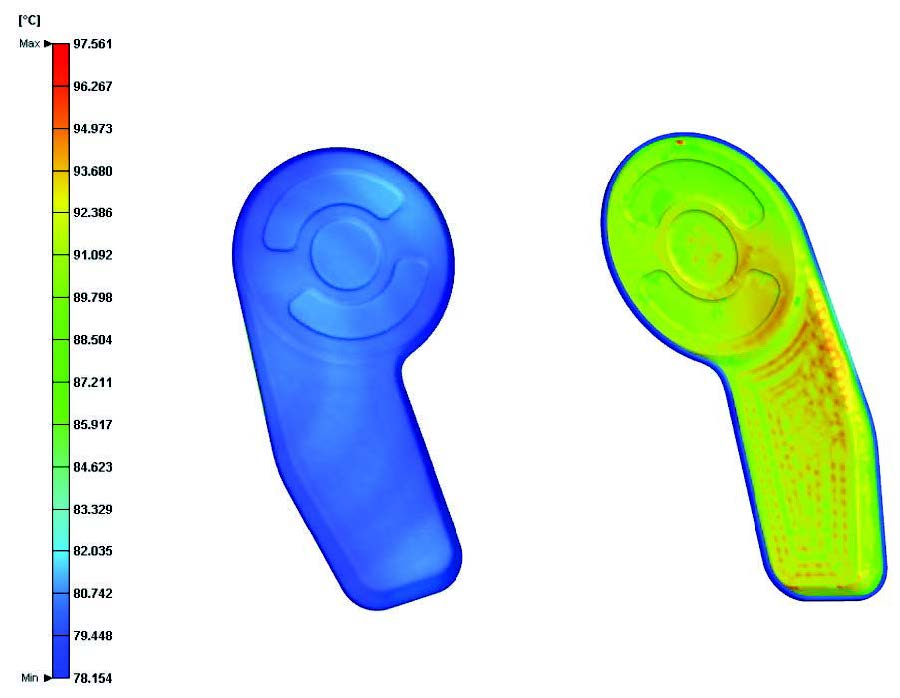
In the automotive industry, the interest and demand for interiors with attractive surfaces that are increasingly customized, with high quality, combined with the integration of functional and interactive properties has increased dramatically in recent years. This demand has stimulated R&D around design, flexible electronics, and the combination of plastic parts production processes and integrating these properties during the production cycle.
The approach presented, although already present in the industry, constantly lacks evolution and optimization of technologies, as well as
the combination of different functionalities in the same part. By incorporating flexible electronics directly into the injection process, it is possible to eliminate the traditional mechanical buttons and reduce the number of parts, assembly processes, and the system’s total weight. This technology, known as In-Mold Electronics (IME), is considered an emerging technology in the market, with an exponential growth forecast in the automotive industry between 2020-2030 [1]. As significant advantages, it is important to highlight the fact that it allows designers to develop more aesthetically interesting products, with three-dimensional surfaces, accentuated contours, and ergonomically adapted to the needs of consumers. The IME technology is achieved by printing electronic circuits on polymeric films. Subsequently, the printed films are thermoformed in three-dimensional format with the final geometry of the part, and over-molded, as in the traditional IMD process.
SMART4CAR – Smart Surfaces for Automotive Components, is a co-promotion project, within the scope of the Bosch Suppliers Club, whose consortium is formed by InovePlastika – Inovação e Tecnologia em Plásticos S.A, a business promoter, with extensive experience in the development and production of injected components. of added value, the PIEP – Centre for Innovation in Polymer Engineering, University of Minho, the CENTITVC – Centre for Nanotechnology and Technical, Functional and Intelligent Materials, and the INL – International Nanotechnology Laboratory. Subsequently, this R&DT project aims to develop a solution that includes the incorporation of decorative, functional, and interactive properties during the injection molding process (Figure 1).

Figure 1. Integration of IME in the over-moulding process for the production of controls on the central panel of the car cabin, which includes the incorporation of decorative, functional, and interactive properties (Illustrative image (Renders).
One of the great challenges present in the project is the incorporation of a single film, with electronics and with the decorative pattern, which will allow a considerable reduction of process steps as well as the minimization of associated raw material or the introduction of secondary decorative processes. In this way, it is extremely important to ensure the integrity and survival of all electronic components throughout the processes to which they are subject. During injection molding, these components can suffer degradation or displacement, due to high temperatures, high pressures exerted, and high shear rates. This process requires specially selected films and inks. Factors such as compatibility between materials, film thickness, formality, and temperature resistance of the paint and films, have to be carefully considered in the material selection stage so that the final part has the quality and meets the requirements of the automotive industry.
By performing numerical simulations of the injection moulding process, it was possible to define the location of the molten material inlets, in positions in order to guarantee the survival or minimization of the effects of shear rates and the degradation of electronic components. Through the simulation, it was also possible to predict areas in which the film would have a greater probability of melting, and perhaps, suffering drag. This function made it possible to predict defects and correct them before the actual process (Figure 2).

Figure 2. Prediction, through the numerical simulation of the process, of areas of the film that may melt or cause its drag during the injection.
This is a critical step, and it can jeopardize all the work previously carried out. The numerical simulation also allows for effective analysis and selection of the most suitable temperature control system for the injection mold. With the use of this methodology, it is possible to verify the efficiency of the cooling system, the layout of the system, and the required cooling time, taking into account the incorporation of the film in the process that causes a different distribution of temperatures on both sides of the part (Figure 3).

Figure 3. Asymmetric temperature prediction during cooling is caused by the incorporation of the film in the process.
The selection of the most suitable processing conditions for the component in question, in order to reduce, for example, the warping of the part can, in a similar way, be defined. As obvious advantages of this methodology, there is not only a reduction in raw material (scrap), but also a reduction in the time spent on machine hours, and energy in obtaining parts in accordance with the requirements and specifications intended.
The project will demonstrate technological progress in this field, thus allowing the consortium and the national industry the opportunity to reposition themselves in the global value chain of the automotive industry and, also, allow the easy industrialization of the technologies described.
Acknowledgments
Work carried out within the framework of the SMART4CAR project, POCI-01-0247-FEDER-045096, financed by the European Regional Development Fund (ERDF) through the Operational Program PO North.
[1] Richard Collins, “In-Mold Electronics 2020-2030: Technology, Market Forecasts, Players,” IDTechEX.
Authors:

Carina Peixoto, Research Engineer of the Advanced Manufacturing Processes – Polymers area of PIEP;
Cátia Araújo, Research Engineer of the Advanced Manufacturing Processes – Polymers area of PIEP;
Rita Marques, Project Manager of the Advanced Manufacturing Processes – Polymers area of PIEP;
Sílvia Cruz, Coordinator of the Advanced Manufacturing Processes – Polymers area of PIEP.
Ana Sampaio, CeNTI – Centro de Nanotecnologia e Materiais Técnicos, Funcionais e Inteligentes
Pablo Thiago Valentim, INL – International Iberian Nanotechnology Laboratory
António Pontes, University of Minho
Hélio Santos, Inovaplastika, SA.
Article originally published in Molde magazine.

